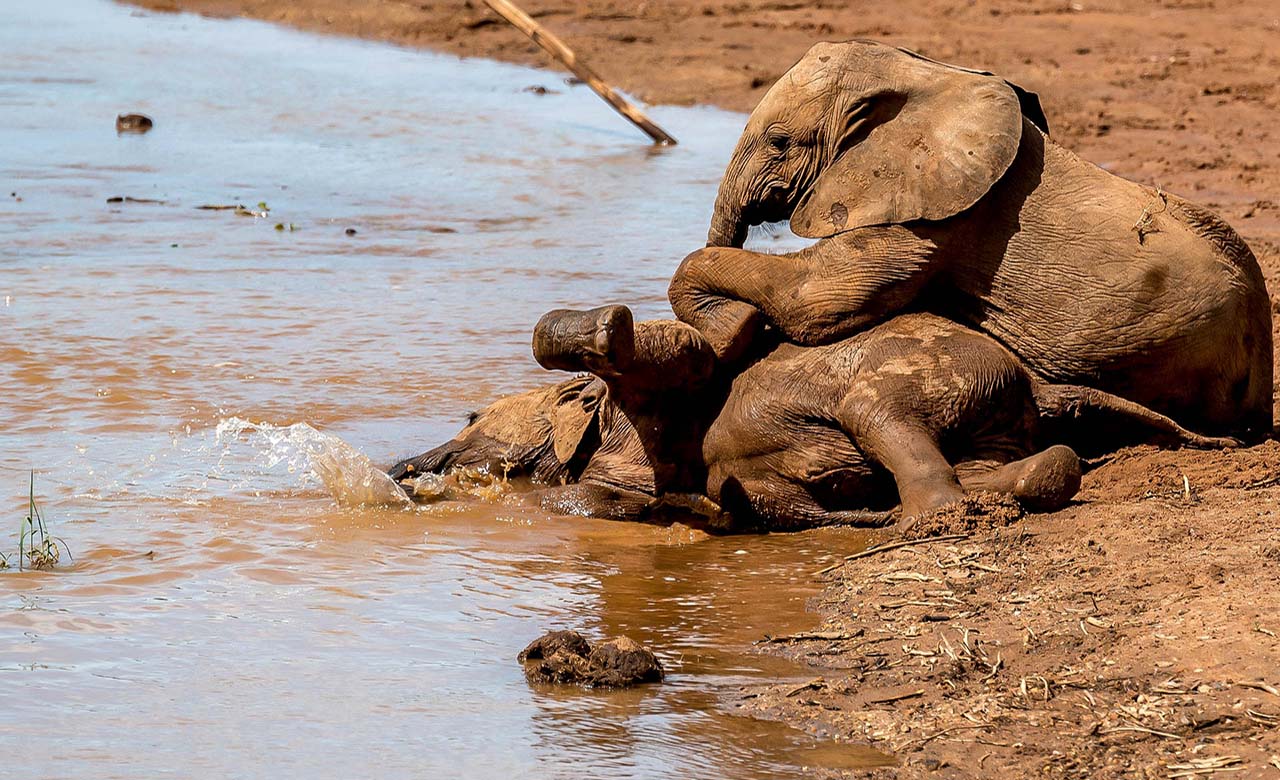The fascinating forest elephant in Dzanga-Sangha
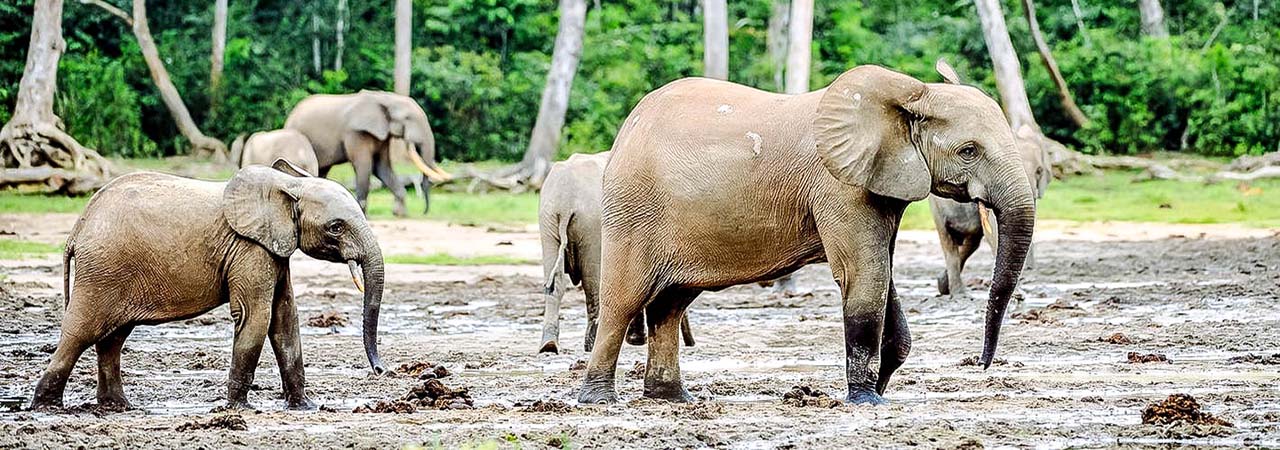
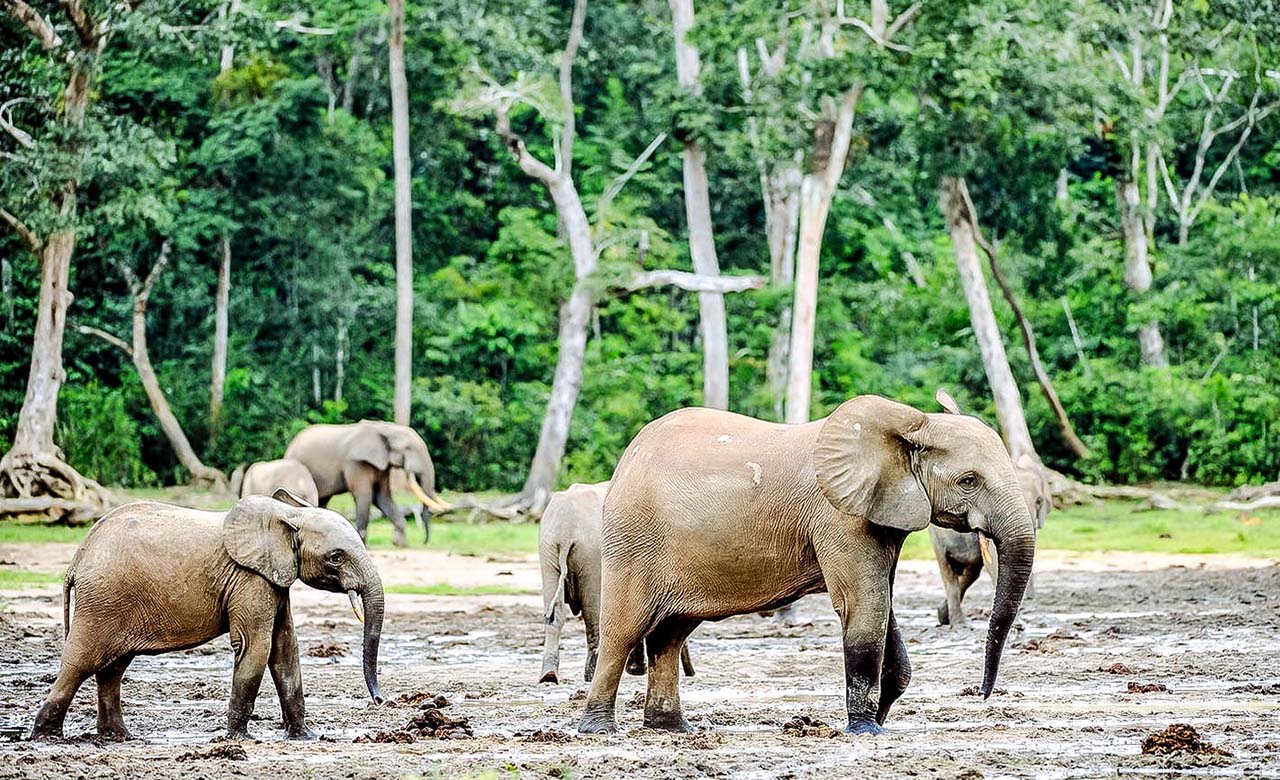
The African forest elephant (Loxodonta cyclotis) is a mammal of the Elephantidae family, typically forest and smaller than its cousin in the savannah. They are generally found in the dense forest of Central and West Africa, but also sometimes on the edge of forest territories just like the savannah elephants. Their ears are generally smaller and more circular than those of savannah elephants. The tusks are also thinner and straighter. The males are between 5.5 and 7.5 meters long (6.5 meters on average) and weigh from 4 to 6 tons (5 tons on average), while the females are smaller, measure between 4 and 5 meters long (4.5 meters on average) and weigh between 2 and 3.5 tons (2.75 tons on average).
Food
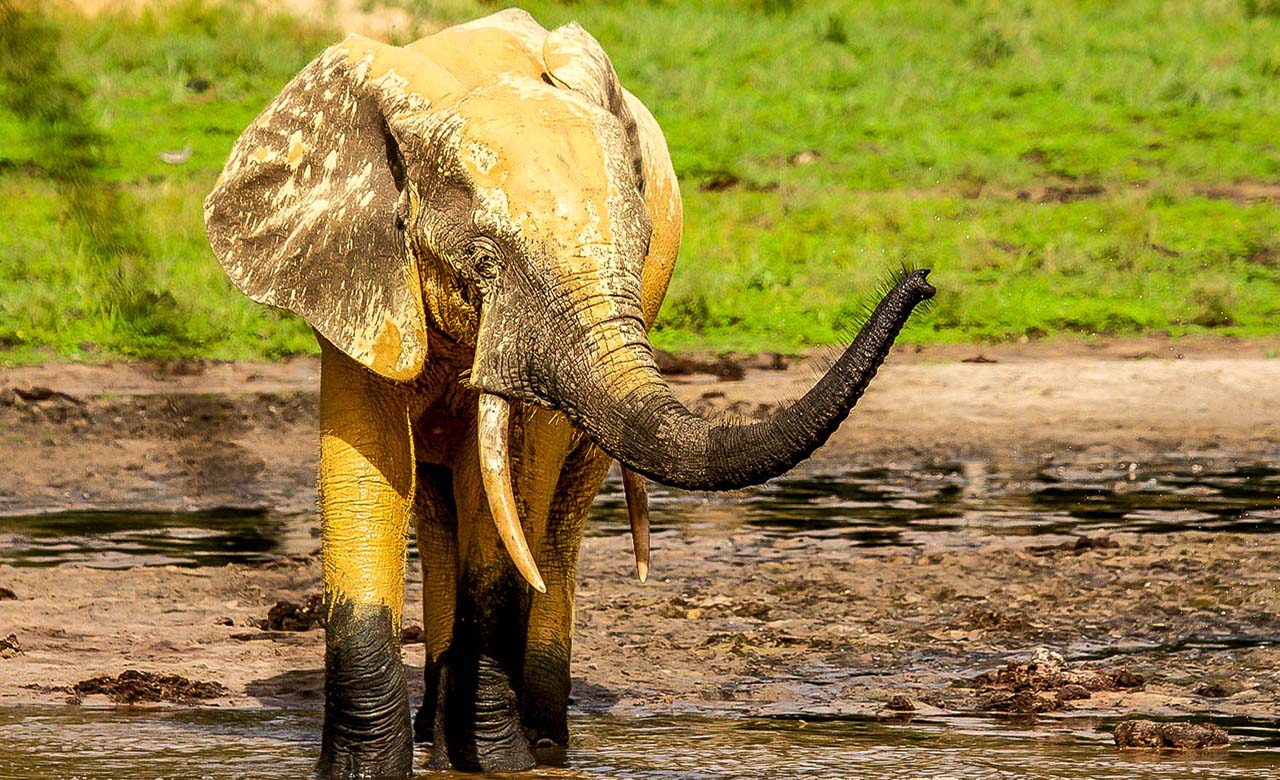
Threats and vulnerability
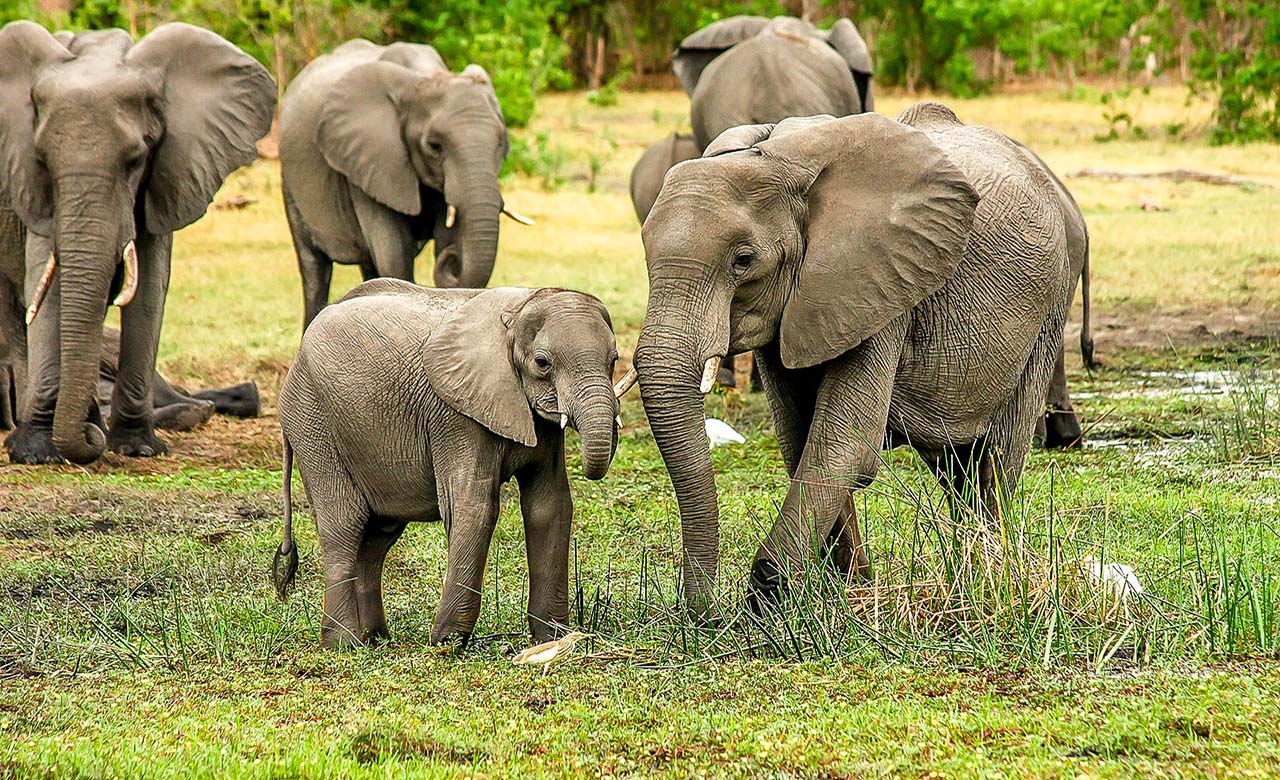
Estimated at several million before the colonial era, the elephant forest population fell in a few decades by almost 70%. The forest elephant is on the verge of extinction. Ivory trafficking is the main cause of the elephant’s disappearance and nowhere in Africa is it as important as in the Congo Basin. Forest elephant ivory is particularly sought after because it is more compact and more attractive on the market than savannah elephant ivory.
Forest elephants in Dzanga-Sangha
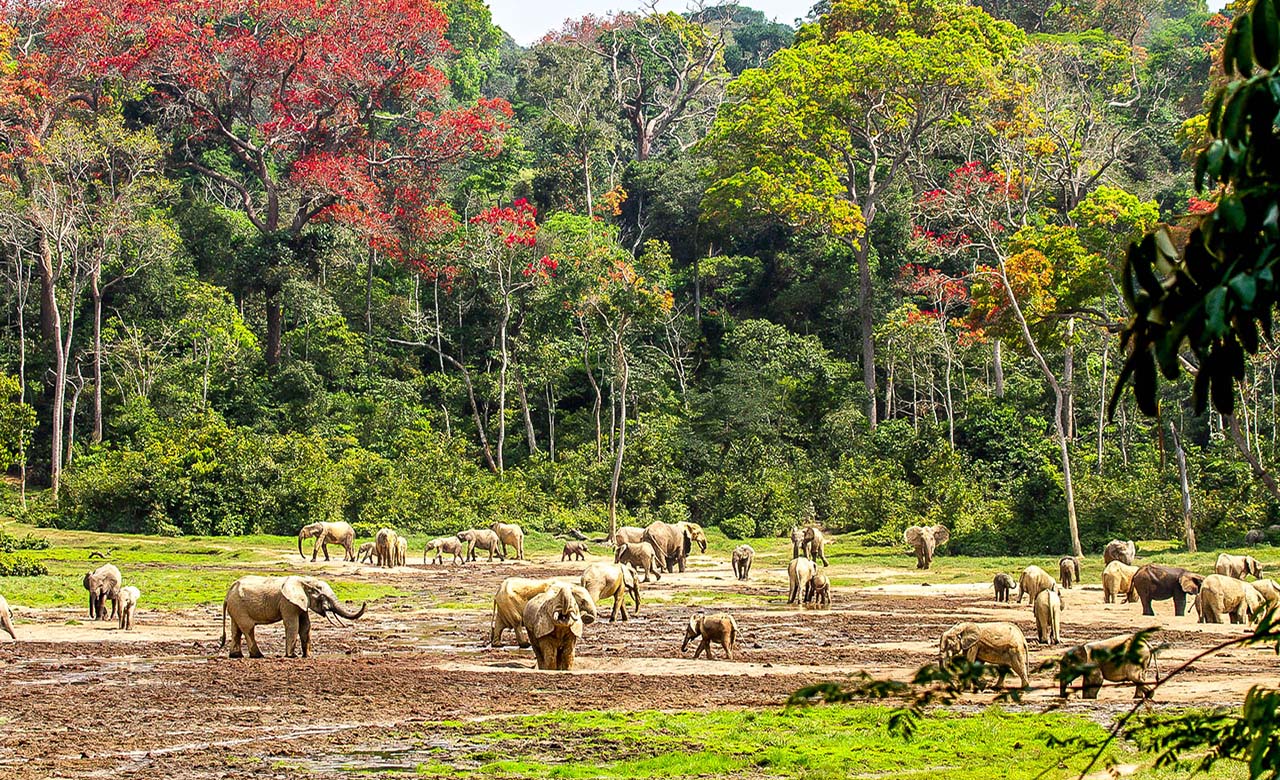
In the Dzanga-Sangha Trinational, more precisely in Dzanga Bai, visitors can observe and photograph large groups of elephant families of up to 150 specimens. Elephants in search of essential minerals dig water holes in the ground to collect them, take a mud bath and interact with each other. This constitutes a unique natural experience to be absolutely lived.
Elephant watching
